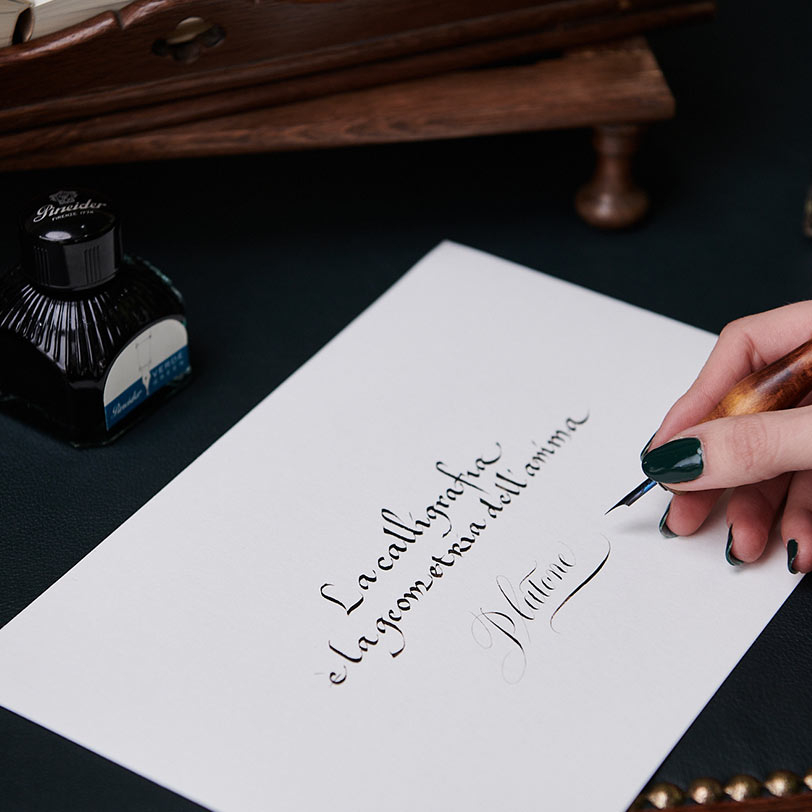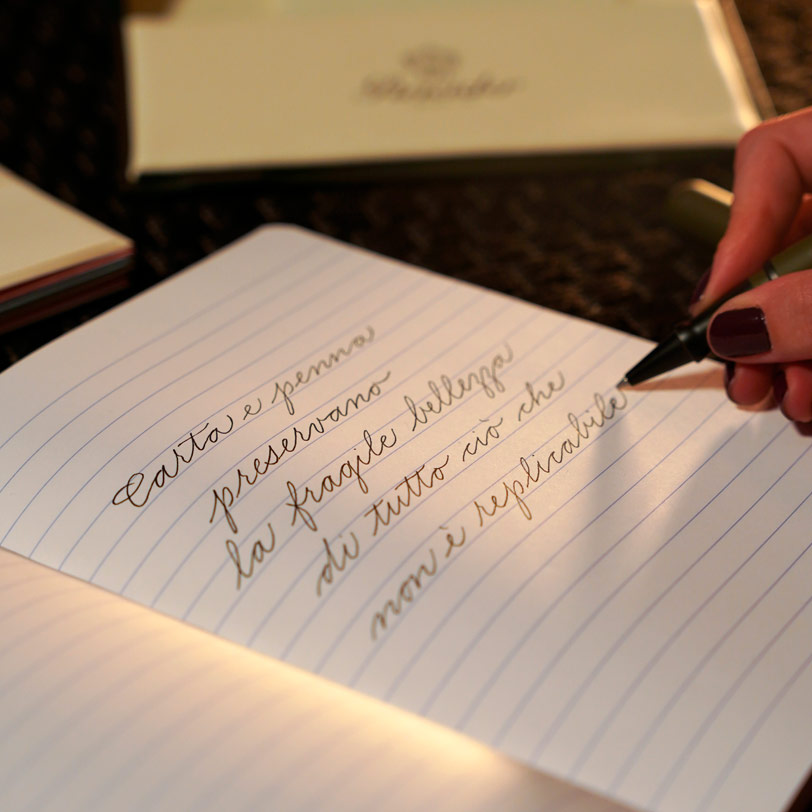Handwriting is an ancient art that has undergone many evolutions over the centuries. There are several types of cursive handwriting, each with its own distinctive identity and characteristics. Some of the most common are Italic or Italian cursive, which has an emphasis on artistic calligraphy; American cursive or Spencerian cursive, which has an elegant and harmonious appearance; and English cursive or Copperplate, which has a formal and sophisticated appearance.
Jump to:
- The meaning of elegant cursive in calligraphy
- Italic cursive: the Italian writing tradition
- American cursive: an ancient art for modern communication
- Copperplate cursive: an English font with a unique history
- Conclusion

The meaning of elegant cursive in calligraphy
Elegant cursive handwriting is a style that is distinguished by its formal and sophisticated appearance. This lettering style is characterized by flowing, harmonious lines that create a coherent and uncluttered visual impression.
Elegant handwriting is often used on formal occasions, such as writing letters or signing important documents, or to create artistic calligraphy. Mastering this elegant writing style requires training and skill development, but once the technique is mastered, practice can be very rewarding and produce high-level results.
Italic cursive: the Italian writing tradition
Cancelleresque calligraphy, also known as Italic, is a cursive writing style with a history spanning centuries. Originating in Italy, it is an essential part of its literary and artistic tradition. It is considered the source of all cursive used in Western countries today and has a strong element of decoration and a typical Renaissance feel, but at the same time it maintains a high legibility due to the familiarity we still have with handwriting.
Italian Renaissance artists and calligraphers developed an elegant and refined writing style, which influenced many of that period’s artworks and written documents. Today, this type of classical calligraphy is preferred by many calligraphers, both in Europe and in other parts of the world. Italic cursive is very versatile and can be used in many different contexts, from personal letter writing to art and work projects.
To create effective italic cursive handwriting, attention must be paid to many nuances, such as pen angle, line width, and letter shape. Practice and perseverance are key to becoming proficient in using italic cursive.

American cursive: an ancient art for modern communication
American cursive, also known as Spencerian cursive, is a style of cursive writing that was developed in the United States during the 19th century. It was created by Platt Rogers Spencer, a teacher of calligraphy and handwriting, and became very popular because of its beauty and legibility.
Spencerian cursive was used in many of the publications and documents written in America during the 19th and early 20th centuries, but it was gradually replaced by other more modern and mechanized writing styles. However, recently, there has been a resurgence of interest in Spencerian cursive, and many calligraphers and artists have rediscovered its beauty and versatility.
Spencerian cursive is characterized by elegant, supple curves with a slight rightward slope, and it has a distinctive aesthetic that sets it apart from other cursive writing styles. Today, Spencerian cursive is still taught and used as an artistic writing and calligraphy style, and many artists have adapted and reworked it to create artwork or work projects in an elegant and sophisticated way. Its classic beauty makes it an attractive option for projects that require a formal touch and vintage aesthetic. Moreover, similar to Pineider, many calligraphers and artists continue to study and practice American cursive to preserve and promote the tradition of calligraphy.

Copperplate cursive: an English font with a unique history
English Cursive was developed as a commercial script in England in the 18th century and achieved widespread use in the following century, so much so that it is still taught in elementary school in many countries in Europe. Also known as Copperplate, this handwriting font features a decorative and eccentric design, with alternating light and dark and particularly elaborate capital letters. At the same time, English Italic is sophisticated and easily readable because of its recognizability.
Its success is due to the spread of the fountain pen, a modern evolution of the turkey pen that replaced the quill pen used for writing until the 19th century. As the effects of the Industrial Revolution progressed, fountain pens finally supplanted the quill pen.
English Italic, or Copperplate, is still used today by many public administrations in their official communications. In the artistic field, it is often used to create invitations, menus, business cards, labels and other forms of design. In the practical field, it is used for handwriting formal letters, notes and memos.

Conclusion
Pineider is the ideal place for those who want to explore their passion for different types of handwriting and calligraphy, and for those looking for high-quality products to enhance their experience.
Fountain pens offer greater flexibility and strength than traditional goose nibs. This has enabled calligraphers and artists to create more elaborate and high-quality works. Therefore, Pineider also offers a wide range of high-quality fountain pen nib products, including spares and inks, and other accessories for fountain pens for our luxury pens to best support this creative process.
Pineider offers a unique and comprehensive writing experience for those who wish to rediscover the pleasure of handwriting and elevate their skills with the Beautiful Handwriting Workshop. In addition, we offer a Florentine Writing Workshop with the aim of discovering the world of calligraphy through the works of the most famous Florentine authors and teaching the ancient art of calligraphy that dates back to Renaissance Tuscany.